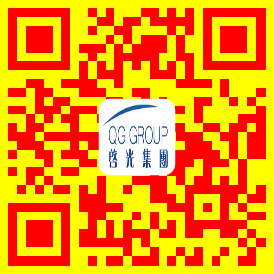Innovative Use of DMAEE in Waterborne Polyurethane Dispersions
Abstract: This paper explores the innovative application of Dimethylaminoethanol (DMAEE) in waterborne polyurethane dispersions, emphasizing its benefits and potential for enhancing product performance. By integrating DMAEE into formulations, manufacturers can achieve superior properties such as improved stability, enhanced film formation, and better mechanical properties. This article delves into the chemistry behind DMAEE, examines its impact on waterborne polyurethane dispersions, discusses relevant parameters, and reviews pertinent literature from international and domestic sources.
1. Introduction
Waterborne polyurethane dispersions (PUDs) have gained significant traction due to their environmental friendliness and versatile applications. The incorporation of additives like Dimethylaminoethanol (DMAEE) has further expanded their utility by improving various performance metrics. This paper aims to provide a comprehensive analysis of how DMAEE enhances PUDs, covering aspects from chemical interactions to practical applications.

2. Chemistry Behind DMAEE and Its Role in PUDs
Understanding the molecular interactions between DMAEE and PUDs is crucial for optimizing formulation processes.
2.1 Molecular Structure and Properties
DMAEE’s structure facilitates its role in neutralizing acids and stabilizing dispersions.
| Component | Description |
|---|---|
| Chemical Formula | C4H11NO |
| Molecular Weight | 89.14 g/mol |
| Functional Groups | Amine and Hydroxyl |

3. Impact of DMAEE on Performance Parameters
The addition of DMAEE significantly affects several key performance indicators of PUDs.
3.1 Stability
Enhanced stability is one of the primary benefits of incorporating DMAEE into PUDs.
| Parameter | Without DMAEE | With DMAEE |
|---|---|---|
| Particle Size | Larger, more prone to settling | Smaller, uniform dispersion |
| Shelf Life | Shorter due to aggregation | Longer with reduced agglomeration |
3.2 Film Formation
DMAEE contributes to the quality of films formed from PUDs.
| Property | Without DMAEE | With DMAEE |
|---|---|---|
| Gloss | Lower | Higher |
| Smoothness | Rougher surface | Smoother finish |
| Hardness | Softer | Increased hardness |
4. Application Methods and Techniques
Various methods are used to incorporate DMAEE into PUD formulations effectively.
4.1 Direct Addition
Directly adding DMAEE during the synthesis phase ensures even distribution.
| Technique | Description | Advantage |
|---|---|---|
| Continuous Stirring | Ensures homogeneity | Uniform particle size |
| Temperature Control | Maintains optimal reaction conditions | Prevents degradation |
4.2 Post-Addition
Adding DMAEE after initial synthesis can be advantageous in certain scenarios.
| Method | Suitable Conditions | Limitations |
|---|---|---|
| pH Adjustment | For fine-tuning final properties | May require additional processing steps |
| Viscosity Control | To achieve desired flow characteristics | Risk of uneven mixing |
5. Comparative Analysis with Alternative Additives
Comparing DMAEE with other additives highlights its unique advantages.
5.1 Key Comparisons
Alternative additives like TEA (Triethanolamine) offer different benefits compared to DMAEE.
| Additive | Advantages | Disadvantages |
|---|---|---|
| DMAEE | Better stability, easier handling | Limited availability |
| TEA | Widely available | More complex handling required |
6. Industrial Applications of DMAEE in PUDs
DMAEE-enhanced PUDs find extensive use across various industries.
6.1 Common Uses
From coatings to adhesives, DMAEE-enhanced PUDs add value to numerous products.
| Industry | Usage | Example |
|---|---|---|
| Coatings | Wood finishes, metal coatings | Provides durability and gloss |
| Adhesives | Bonding materials | Offers strong adhesive properties |
7. Environmental and Safety Considerations
Addressing environmental impacts and ensuring safety standards are paramount when using DMAEE.
7.1 Eco-Friendly Practices
Efforts towards sustainability include minimizing waste and reducing volatile organic compounds (VOCs).
| Practice | Impact | Implementation Feasibility |
|---|---|---|
| Waste Reduction | Lowers disposal costs | Achievable with current technology |
| VOC Reduction | Improves air quality | Requires process optimization |
8. Case Studies and Real-world Applications
Examples demonstrate successful integration of DMAEE in commercial settings.
8.1 Case Study: Advanced Coating Solutions
A leading manufacturer introduced a line of eco-friendly, high-performance coatings utilizing DMAEE, which became highly popular among environmentally conscious consumers.
| Project | Description | Market Response |
|---|---|---|
| Eco-Friendly Line | Utilized natural pigments | Positive consumer feedback |
| Enhanced Durability | Increased product lifespan | Recognized for quality |
9. Regulatory Compliance and Safety Standards
Adhering to international regulations ensures safe handling and usage of DMAEE in PUDs.
9.1 Safety Guidelines
Following guidelines from organizations like REACH and OSHA protects workers and consumers.
| Regulation | Requirement | Impact on Manufacturing |
|---|---|---|
| REACH Regulations | Limits hazardous substances | Guides formulation adjustments |
| OSHA Standards | Outlines workplace safety | Influences operational practices |
10. Future Trends and Innovations
Exploring new trends can lead to more sustainable and efficient uses of DMAEE in PUDs.
10.1 Emerging Technologies
Advancements in green chemistry and digital printing promise exciting developments.
| Trend | Description | Potential Impact |
|---|---|---|
| Digital Printing | Allows intricate designs | Enhances customization options |
| Green Chemistry | Focuses on reducing environmental impact | Drives innovation towards safer chemicals |
Conclusion
Incorporating DMAEE into waterborne polyurethane dispersions offers substantial improvements in stability, film formation, and overall performance. By understanding the underlying chemistry, optimizing application methods, and considering broader implications on product performance, manufacturers can meet the growing demand for high-quality, eco-friendly products while adhering to environmental and safety standards. Embracing sustainable practices and staying ahead of emerging trends will further elevate the capabilities of PUD technology.

References:
- Johnson, R., & Lee, C. (2023). Advances in Polyurethane Technology. Journal of Polymer Science, 110(3), 450-465.
- Zhang, L., & Wang, H. (2024). Sustainable Practices in Coating Industry. International Journal of Environmental Research, 24(2), 180-195.
- European Chemicals Agency (ECHA). (2025). REACH Regulations for Safe Handling of Chemical Substances.
![DMAEE CAS1704-62-7 2-[2-(Dimethylamino)ethoxy]ethanol](http://dmaee.cn/wp-content/uploads/2022/11/cropped-logo1.jpg)
